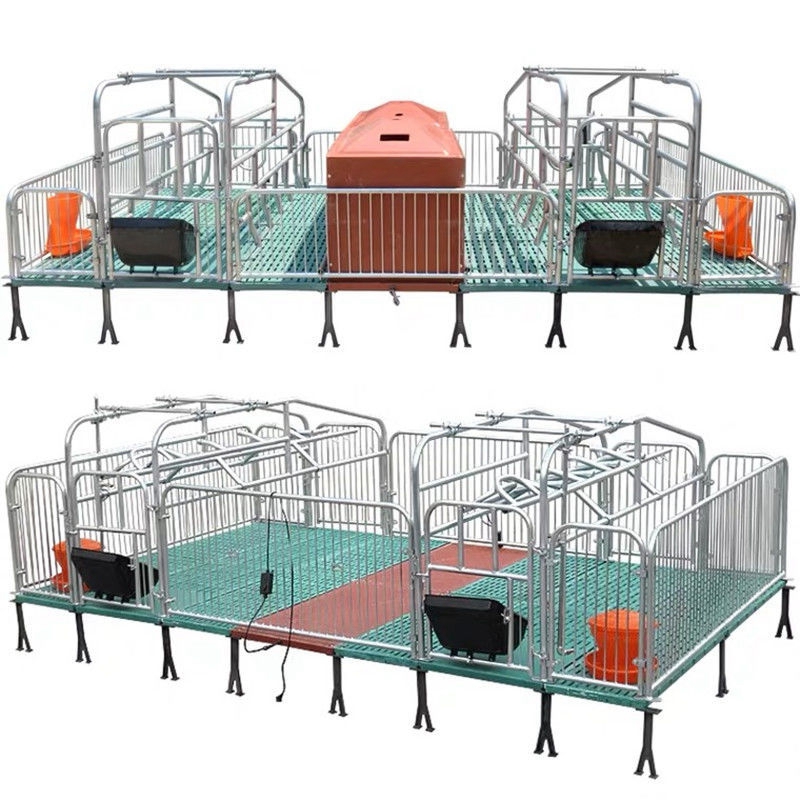Creating a Comfortable and Safe Environment for Backyard Poultry in a Suitable Cage Design
Jul . 20, 2024 12:08 Back to list
Creating a Comfortable and Safe Environment for Backyard Poultry in a Suitable Cage Design
A Cage for Poultry Ensuring Comfort and Safety
The poultry industry plays a vital role in global food production, providing a rich source of protein through eggs and meat. However, raising poultry requires careful consideration of their living conditions, and one of the critical components of this is the cage in which they are housed. A well-designed cage can significantly impact the health, welfare, and productivity of poultry, making it essential for farmers and producers to understand the best practices in cage design and management.
A Cage for Poultry Ensuring Comfort and Safety
From a welfare perspective, however, the design of the cage is crucial. Traditional battery cages used for laying hens, for instance, have come under scrutiny for not providing enough space for the birds to move freely, engage in natural behaviors, or even spread their wings. In recent years, there has been a shift towards more humane alternatives, such as enriched cages. These cages are designed to offer birds greater space, perches, nesting boxes, and dust bathing areas. Such enhancements not only comply with emerging regulations but also improve the overall well-being of the birds, leading to healthier flocks and better quality eggs.
a cage for poultry

When considering a cage for poultry, several factors should be taken into account. First, the size of the cage must accommodate the number of birds intended to be housed. Overcrowding can lead to stress, aggression, and an increased likelihood of disease outbreaks. Proper ventilation and lighting are also essential to ensure that the environment remains comfortable. Birds need a well-ventilated space to avoid heat stress and respiratory issues, while adequate lighting supports their natural circadian rhythms, promoting normal behavior patterns and productivity.
Moreover, the materials used in cage construction play a significant role in the longevity and sanitation of the housing system. Cages should be made from durable, easy-to-clean materials that can withstand regular disinfection. This not only helps maintain a healthy environment for the birds but also reduces the risk of disease transmission between flocks. Farmers must also ensure that cages are designed to minimize stress during handling and movement, including features that allow for easy access during feeding and watering.
Beyond physical considerations, the management of poultry cages is equally important. Farmers must adopt best practices in biosecurity measures to protect their flocks from disease. This includes regular health check-ups, maintaining clean environments, and implementing strict protocols for introducing new birds into the existing flock. Additionally, training staff in animal welfare practices can further enhance the care provided to the birds, fostering a culture of compassion and attention to their needs.
In conclusion, the design and management of cages for poultry are critical elements that influence not only the productivity of the farming operation but also the welfare of the birds themselves. By prioritizing humane cage practices, understanding the requirements for space and environment, and implementing effective management strategies, poultry farmers can create a thriving habitat for their birds. Ultimately, investing in the well-being of poultry leads to better-quality products and a more sustainable future for the poultry industry. As consumers become increasingly conscious of animal welfare issues, the move toward better cage systems will undoubtedly contribute to a more ethical and responsible approach to poultry farming.
-
High Performance Exhaust Fan – Efficient Ventilation Solutions for Home
NewsJun.10,2025
-
High-Quality Gestation Pen for Sows Durable Mobile Pig Pen & Simple Pig Pen Solutions
NewsJun.10,2025
-
High Quality Rabbit Cage Double Tier Designs & Welded Wire Mesh Supplier
NewsJun.10,2025
-
Floating Fish Feed Machine - High Efficiency Floating Fish Feed Extruder for Small Scale Production
NewsJun.10,2025
-
Premium Poultry Housing Solutions Mobile & Commercial Free Range Options
NewsJun.10,2025
-
Industrial FRP Fans Corrosion-Resistant Blades & Centrifugal Systems
NewsJun.09,2025






